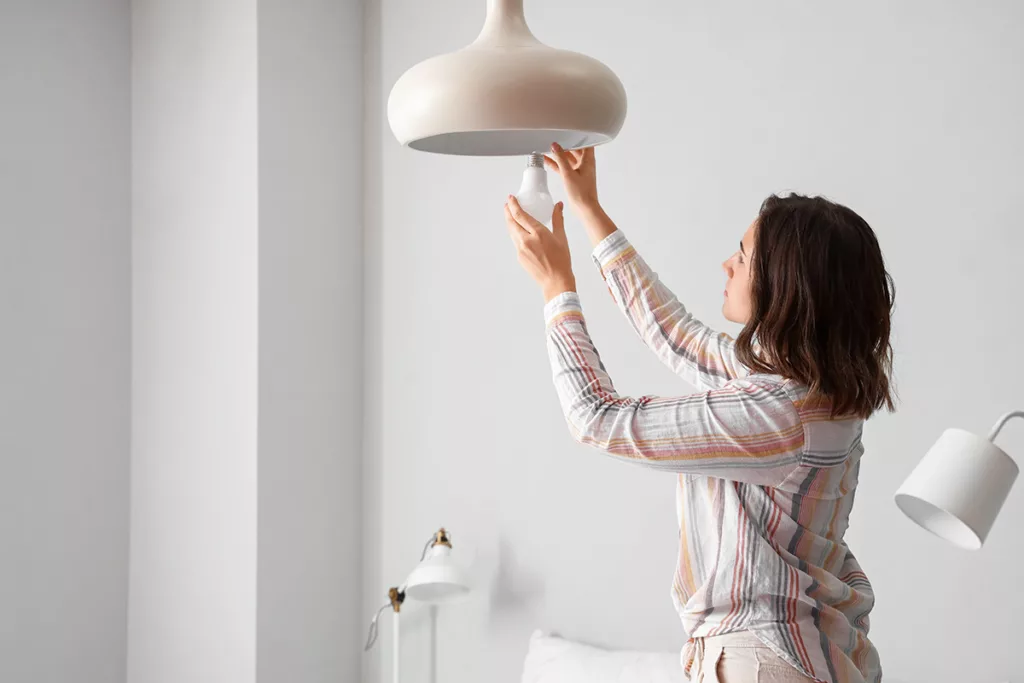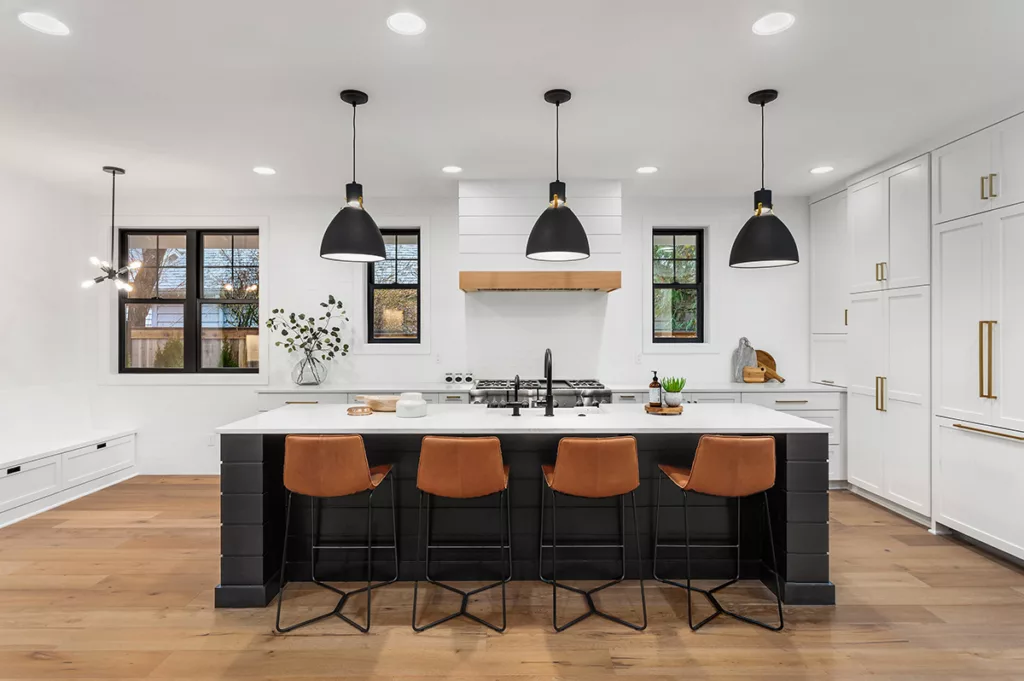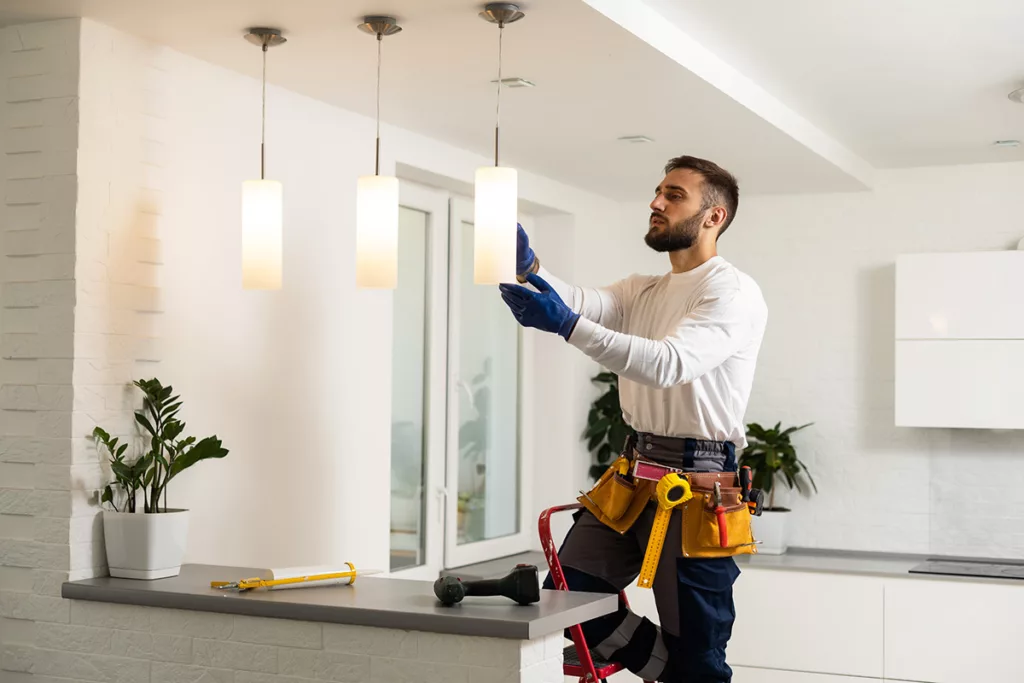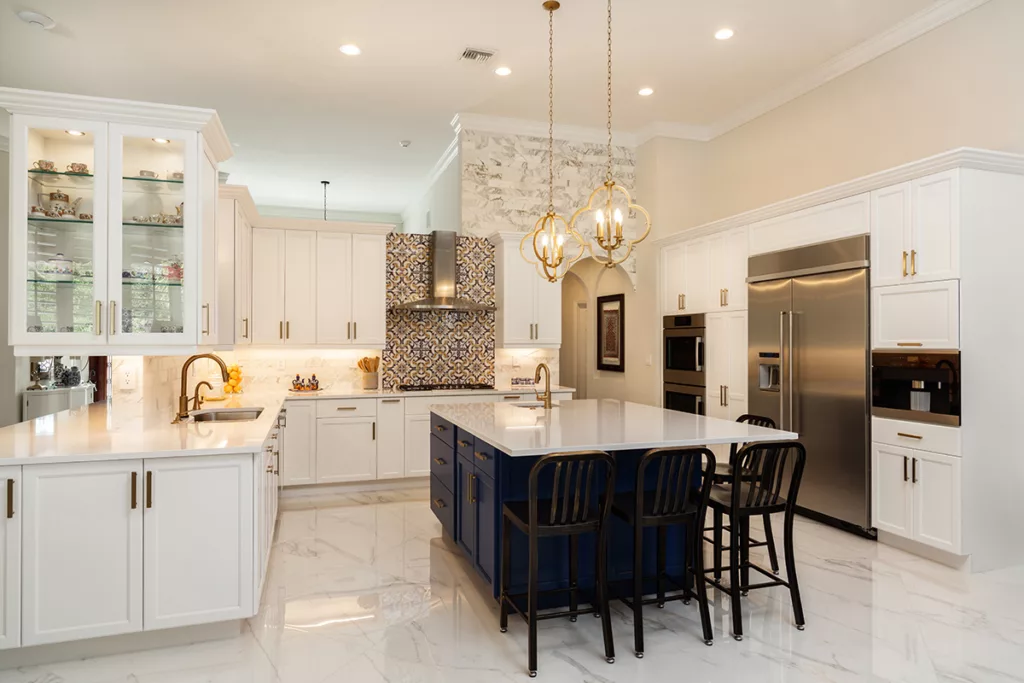A thoughtfully executed lighting remodel can breathe new life into your home, enhancing both the aesthetic appeal and functionality of your living spaces. With the right approach, you can not only increase your home’s curb appeal but also boost its value and energy efficiency. In this guide, we explain how to plan a successful residential lighting remodel and provide expert tips to ensure a smooth and efficient project.
Planning a Home Lighting Remodel Project

Laying the groundwork for your lighting remodel project is crucial for a successful outcome. Here’s how to get started:
Assess Your Current Lighting
A good way to start your assessment is to walk through each room of your home, noting areas that are poorly lit, contain outdated fixtures, or have harsh lighting. These observations can help pinpoint where improvements are needed the most, so you can prioritize them accordingly.
Energy Consumption Analysis
Analyzing your current energy consumption can help you identify inefficiencies and potential opportunities for savings. For example, many older homes still use incandescent bulbs, which are now banned in Sonoma County and are far less energy-efficient than modern LED bulbs.
Identifying inefficiencies like this allows you to focus your remodel on solutions that help save energy, potentially reducing electricity bills in the long run.
Define Your Lighting Goals
Once you have assessed your current lighting setup, you can then use the data you gathered to define the lighting goals you would like your remodel to accomplish. This involves setting both functional and aesthetic goals, so your new lighting design not only looks good, but also meets the practical needs of your home’s living spaces.
Here are some examples of goals you can have for a residential lighting remodel:
- Enhance overall brightness and eliminate dark spots in living areas
- Improve task lighting in the kitchen or home office for better functionality
- Retrofit current lighting fixtures with LED bulbs to reduce electricity bills
- Install dimmable lights in living areas for adjustable ambiance
- Update outdated fixtures with modern designs to refresh the home’s aesthetic
- Integrate smart lighting systems for remote control and automation
The possibilities are vast, so it’s important to carefully consider your wants and needs so you know what to prioritize during your remodeling project.
Choosing the Right Lighting Fixtures

After defining your lighting goals, you can then start choosing lighting fixtures. It’s important to make selections that align with your design goals and meet your practical needs. Here are some elements to consider when choosing the right lighting fixtures for your home lighting remodel.
Lighting Layers
A layered lighting design will provide different types of illumination for various purposes. Here are the three key layers of light to consider:
- Ambient lighting (general lighting): the primary source of light in a room, offering comfortable brightness without glare from ceiling fixtures, chandeliers, or recessed lights.
- Task lighting: focuses light on specific areas to brighten tasks such as reading, cooking, or studying. Examples include pendant lights over kitchen counters, or desk lamps.
- Accent lighting: used to highlight architectural features, artwork, or important objects within a space to add depth and dimension. Track lighting and directed recessed lights are a common choice.
Types of Lighting Fixtures
There are many different kinds of fixtures to choose from to complement your home and interior design aesthetic. Here are some of the most common examples:
- Recessed lighting: installed into an opening in the ceiling to provide clean, streamlined illumination. This works well in any room for general lighting.
- Pendant lighting: hangs from the ceiling to provide focused lighting, ideal over kitchen islands, dining tables, or other areas that need task light.
- Track lighting consists of multiple lighting heads on a single track, which are flexible and adjustable. This is perfect for accent lighting in living rooms.
- Chandeliers and sconces: add aesthetic appeal and ambient lighting, suitable for entryways, dining rooms, and hallways.
Lighting Colors and Temperatures
During a lighting remodel, it’s important to keep more than just the brightness levels in mind. Color temperature (cool vs. warm light) should also be considered, as well as how the light is distributed in each room. Light bulbs come in a variety of color temperatures, which can significantly impact the mood and atmosphere of a space.
Here’s a breakdown of the Lightbulb Kelvin Color Temperature Scale:
- 2000K and under: Very warm and slightly dim, orange/yellow light, like candlelight
- 2000K-3000K: Brighter warm yellowish light
- 3100K-4500K: Bright, neutral-white light
- 4600K-6500K: Cool and bright blueish-white light (Similar to “daylight” at 5200K)
- 6500K and up: Very cool and blueish light
Warmer lighting (2700K-3000K) creates a cozy and inviting atmosphere, ideal for living rooms, bedrooms, and dining areas. Bright neutral-white light (4000K-4500K) provides a more energizing ambiance without feeling sterile, and is well-suited for kitchens, and bathrooms.
Electrical Considerations During a Lighting Remodel

It’s crucial to ensure your home’s existing electrical system can handle your new lighting design. Below are some of the most important factors to discuss with your electrician.
Electrical Wiring
The capacity of your existing electrical system might not be sufficient for your new lighting plan, especially if you’re adding more fixtures or increasing the overall wattage. Consulting a licensed electrician is crucial to assess your current wiring capacity and determine if rewiring is necessary to accommodate your desired lighting design.
Light Switch Placement and Control Types
Lighting control is important to the functionality and ambiance of your home. You should discuss your desired switch placement and the types of lighting control options you want with your electrician. They can ensure proper installation and advise on the most suitable switch types for your specific needs.
To optimize the placement and type of light switches in your home lighting remodel, consider the following:
- Convenience: Place switches at logical entry and exit points of each room for easy access and control.
- Three-Way Switches: Consider using three-way switches for larger rooms or hallways, allowing control of a light fixture from multiple locations.
- Dimmer Switches: Dimmers allow you to adjust lighting intensity to match different moods and activities. They can also help extend bulb life and save energy.
- Timers and motion sensors: Automate your lighting based on the time of day or motion in a room. This enhances security while also reducing energy consumption.
- Smart lighting systems: Control your lighting remotely from smartphones or voice-activated devices. You can customize scenes, schedules, and even color temperature adjustments for optimal comfort and energy efficiency.
By addressing these things with your electrician, they can ensure your lighting remodel meets all safety standards and provides optimal functionality and control.
Your Experts in Residential Lighting Remodels
A successful residential lighting remodel depends on thoughtful planning, careful consideration of your goals, and strategic execution. If you’re thinking about redoing the lighting in your home, our team of licensed electricians at Schafer Electric are here to help.
Contact us online to learn more about our lighting remodel services or give us a call at (707) 545-3300 to get in touch with one of our electricians today.


No comments yet. Add the first comment